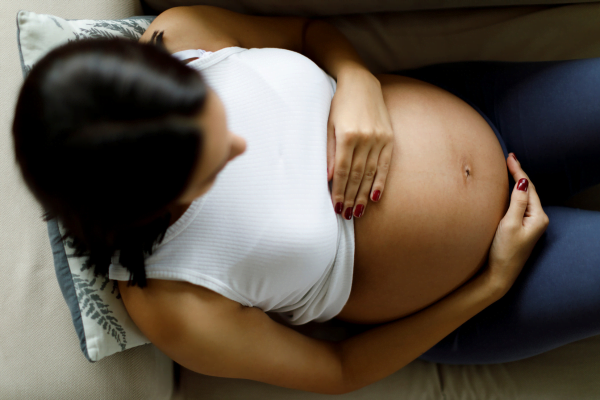According to the United Nations International Children’s Emergency Fund (UNICEF), adolescent pregnancy is defined as the unintended pregnancy in females of the age group 10-19 years.
Adolescent pregnancy can also be phrased as a “child carrying a child”. It is considered to be a public health issue associated with negative impacts and complications on the health of the mother and the foetus. Teenage pregnancies are higher in rural areas than in urban areas. The prevalence of adolescent pregnancies across the globe are as follows – India (21%), Europe (21%), USA (13.9%) and Africa (30%).
The possible reason for an evident rise in the prevalence of teen pregnancy is the change in the mindset of the population. Individuals are more open and accepting of the changing era. There are higher reports of pregnancy at clinics and hospitals contributing to the same.
What are the possible reasons for adolescent pregnancy?
- Teenagers are at an impressionable age. They are highly influenced by peer pressure, child marriage due to family pressure, unwanted/forced sexual relations, low socio-economic status, familial neglect, and lack of sex education.
- Alcoholism and substance abuse.
- Mental health issues such as poor self-esteem, lack of self-control, curiosity.
- Excessive influence of social media and over-the-top platforms (OTT) such as Netflix etc. on young minds. They get half-baked information on pregnancy, sex and parenting. Certain teen TV shows influence teenagers in such a way that teen parenting and sexual relations are normal at this young age.
- Contraceptives are expensive and teenagers cannot afford to purchase them since not all of them have part-time jobs. Even if they do so they prioritise their needs differently.
- Poor reception at hospitals, long wait times and no privacy at clinics are some reasons for youngsters to not opt for abortion.
Let’s consider patient Alice (name changed), a 17-year-old girl who was taken to a clinic by her mother during her suspected pregnancy. Alice was not aware of her impending pregnancy. She belonged to the lower socioeconomic class and handled her mother’s food stall during the after-school hours. A middle-aged man had offered to support her with education and financial problems and in a few weeks the situation led to a pregnant Alice.
What are the long-term complications that Alice faced?
1. Peripartum depression – Formerly known as postpartum depression, peripartum depression is often a result of the hormonal, psychological, physiological, and emotional changes a mother goes through during her pregnancy period. It is associated with strong feelings of sadness, anxiety, and tiredness which last for a long time after childbirth. These feelings can hinder the mother’s ability to take care of her baby. Peripartum depression affects 1 in 7 women (15%).
Alice was a victim of peripartum depression. The symptoms noticed in her were
- Agitation & worthlessness
- Being subjectively depressed
- Loss of interest
- Insomnia
- Change in appetite
Other symptoms which could be present in individuals are
- Weight changes (>5%/month)
- Suicidal thoughts
- Indecisiveness
Any five symptoms observed for a minimum of 2 weeks are considered to be an indication of peripartum depression. Treatment is usually a combination of therapy and antidepressant drugs but is subject to change depending on the therapist and individual. If you know someone or feel you have thoughts of hurting yourself or your baby contact your nearest therapist for help immediately. Don’t feel afraid to ask for help.
2. Financial crisis – One of the biggest worries adolescent parents may face is money worries. The average cost of child care is USD 12,771 globally. Money worries may be the deciding factor in an unexpected pregnancy. Alice found it difficult to meet the demands of the child, which were especially high during the early childhood period. She was an early school dropout and this also resulted in less availability of jobs with a low pay grade. Alice frantically searched for ways to increase her income through self-employment. Alice and her family found a way to expand their roadside eatery and establish their base. On a positive note, pregnancy is for a long period of 40 weeks. It gives sufficient time to plan for the financial future in a smart way if one is systematic.
3. Victim of substance abuse – Substance abuse refers to binge drinking, tobacco smoking, misuse of prescription opioids, use of marijuana, etc. The use of more than one substance is called polysubstance. This has been observed to be very common in pregnancy. Different substances lead to unique complications in pregnancy as listed below.
- Alcohol – Miscarriage, stillbirths, birth defects, foetal alcohol spectrum disorder (FASD)
- Opioids – Preterm birth, neonatal abstinence syndrome (NAS)
- Cigarette – Mouth and lip birth defects, sudden infant death syndrome (SIDS)
- Marijuana – Low birth weight infants
There is insufficient research to understand the effect of polysubstances on the baby. It is a serious public health issue and has long-term as well as short-term complications. Alice became a victim of binge drinking and there is a high chance of influencing her child to follow the same path in the future. She is therefore more prone to emotional, physical, and sexual violence toward herself and her child due to a lack of impulse control.
If you are or you know someone seeking help with substance abuse, look for trusted peers and family to help you out. They may help guide you to find a suitable substance abuse counsellor to help with addiction.
4. Social disgrace – Alice felt she brought shame to herself, her family, and society. Once her grandparents and aunt knew about her pregnancy, they questioned her integrity which was very hurtful for her. She was merely a teenager and she could not process the emotions that she was going through. She could not go visit the church as she was pinpointed to be a bad role model to the other children which increased the emotional turmoil within her. She would lock herself up in the room and cry for hours. Sometimes she would even starve to punish herself. Most often only the girl is blamed for the pregnancy.
However, it is important to understand that the result of the pregnancy is due to factors such as those listed below and there is no use in blaming Alice but in helping her cope with the situation:
- The absence of choices.
- No control over circumstances.
- Lack of education and employment.
- Lack of quality information.
- Lack of access to healthcare facilities.
5. The burden of care on family – Alice is dependent on her parents to provide care for the baby. The dependence on care is especially severe when the family is in a state of hand-to-mouth. The common conflicts she struggled with are increased conflicts with her siblings and stress to adjust to the new family member (the baby). In this instance, Alice had the support of her family but there may be several cases where the adolescent mother has to fend for herself. It may also be helpful to acknowledge the roller coaster of emotions the family of the adolescent mother experiences. It is a difficult time for the family as a whole. Communication is key to getting over the hardships faced. Acknowledging emotions and providing support is the key. In situations such as this, the help of a third party – a counsellor is quite helpful.
What are the long-term complications of Alice’s son Cavan?
1. Increased infant death and premature birth – Alice was constantly cautioned by her obstetrician of:
- High chance of either premature birth.
- Possible infant death.
This is because adolescent mothers are at a high risk of having the above complications when compared to adult mothers due to biological immaturity. Prenatal care is of crucial importance.
Here are a few prenatal care tips Alice was given by her obstetrician:
- Have a balanced and healthy diet.
- Attend all your prenatal appointments, tests, and ultrasound scans.
- Report all unusual signs to your healthcare provider.
- Engage in activities to reduce stress.
- Do not drink alcohol or smoke cigarettes.
- Take all necessary prenatal vitamins regularly.
- Follow an active lifestyle.
2. Increased risk of abuse and neglect – Cavan displayed evidence of substance abuse at birth and this is supported by an article – “Child maltreatment” published in the journal SAGE in the year 2006, which suggests that mothers who use substances during pregnancy are more likely to end up with children/teenagers who use substances. Neglect can be because of poor attachment between Alice and Cavan. Neglect influences the socioemotional, cognitive, and academic skills of the child, especially during middle childhood. This has perhaps influenced Cavan to have deficits in social, academic, cognitive, and behavioural functioning and adjustment issues. It has also resulted in insecure attachment between mother and child.
3. Poor academic performance – Maternal education is an important determinant and predictor of health and well-being of child development. Teen parents have low academic skills, insufficient to teach their children. Alice could not complete her schooling which is now influencing Cavan’s academic future. However, the self-interest of the child to learn is an independent influencing factor of academic performance and must not be blamed on the mother alone.
4. Increased risk of teenage pregnancy – Children of teen mothers are at a high risk of becoming one themselves because of:
- Poor parent-child interaction.
- Fewer resources available.
- The low academic aptitude of parents.
This can also be termed by the phenomenon – The intergenerational cycle of childbearing. Daughters of teen mothers are most often involved in the intergenerational cycle of childbearing and sons of teen mothers are more likely to be prone to childbearing in teenage. It all comes down to self-control and awareness to break this vicious cycle.
Obesity in post-natal adolescent mothers and children of adolescent mothers
A cumulation of specific factors respective to each of the familial relations. Adolescent health and well-being is of crucial importance. The rate of obesity development is comparatively higher due to changes in the physiology of the mother and the foetus as well. All factors mentioned above are amassed facets of biological, social, behavioural and environmental determinants leading to obesity. It can result in higher risks of obesity such as :
- Non-communicable diseases
- Psychological issues – poor self-esteem, eating disorders, internet addiction
- Reduced quality of life
- Unemployment
- Social disadvantages
- Risk transmission across generations
This strong influence on the upcoming generation and progress must be made to safeguard such situations. Since the youth are the future of the nation.
It is important to understand that sexual and reproductive health rights guarantee girls and women safe and effective control of their fertility, the number of children they want, and their timing thereby improving access to contraceptives and family planning methods.
Hopefully the above is food for thought to understand the long-term complications of adolescent pregnancy. Alice, you and I have to be socially responsible to prevent or handle victims of such situations in the future. Since we have a whole new generation on hand to safeguard and the youth are the future.
Mayuri,
Clinical Dietitian, Simplyweight





